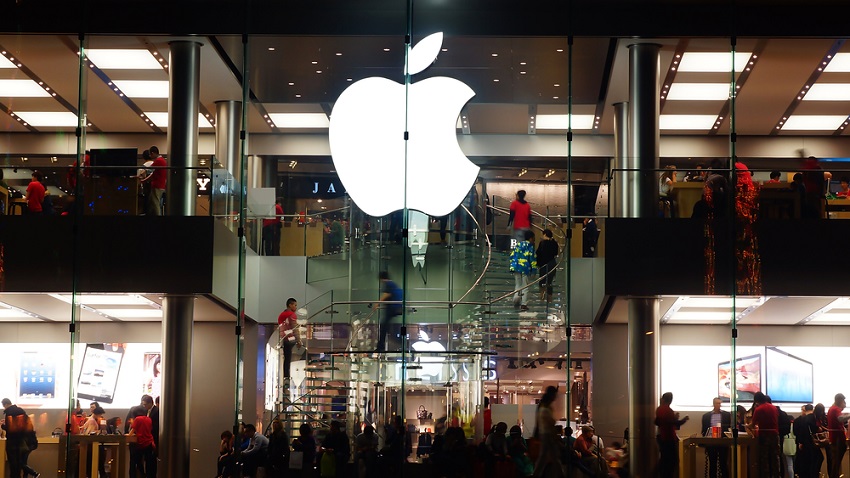The New York Times has a history of taking bizarre stances when it comes to Apple, and nowhere was this more apparent than in a surprisingly misleading article that ran last week. In a story titled, “Apple Cracks Down on Apps That Fight iPhone Addiction,” Jack Nicas detailed how developers with screen-time tracking apps were finding themselves kicked out of the App Store.
As many quickly observed, the tone of the article was oddly conspiratorial and seemed to insinuate that Apple was kicking out apps designed to compete with Apple’s own software. Interestingly enough, the story included a quick blurb from Apple executive Phil Schiller but failed to include the full extent of Schiller’s remarks and Apple’s underlying motivation for kicking certain apps off the App Store.
Schiller subsequently emailed the following in response to an email from a concerned Apple user:
Unfortunately the New York Times article you reference did not share our complete statement, nor explain the risks to children had Apple not acted on their behalf. Apple has long supported providing apps on the App Store, that work like our ScreenTime feature, to help parents manage their children’s access to technology and we will continue to encourage development of these apps. There are many great apps for parents on the App Store, like “Moment – Balance Screen Time” by Moment Health and “Verizon Smart Family” by Verizon Wireless.
However, over the last year we became aware that some parental management apps were using a technology called Mobile Device Management or “MDM” and installing an MDM Profile as a method to limit and control use of these devices. MDM is a technology that gives one party access to and control over many devices, it was meant to be used by a company on it’s own mobile devices as a management tool, where that company has a right to all of the data and use of the devices. The MDM technology is not intended to enable a developer to have access to and control over consumers’ data and devices, but the apps we removed from the store did just that. No one, except you, should have unrestricted access to manage your child’s device, know their location, track their app use, control their mail accounts, web surfing, camera use, network access, and even remotely erase their devices. Further, security research has shown that there is risk that MDM profiles could be used as a technology for hacker attacks by assisting them in installing apps for malicious purposes on users’ devices.
Now, just a few days later, the New York Times editorial board is out with a brand new opinion piece calling on regulators to take a look at how Apple manages the App Store. The article even goes so far as to liken Apple’s control over what goes in and out of the App Store to Microsoft’s control over the PC market back in the 90s.
But Apple’s management of the App Store is also dangerously reminiscent of the anti-competitive behavior that triggered United States v. Microsoft, a landmark antitrust case that changed the landscape of the tech industry.
In the mid-1990s, Microsoft began to bundle its Internet Explorer browser with Windows, moving to elbow competing browsers — primarily, Netscape — out of the picture. This triggered a lawsuit from the Department of Justice and a coalition of state attorneys general in 1998. Microsoft ultimately lost.
The fact that this parallel is being discussed in the Times is nothing short of embarrassing. The comparison between Apple today and the Microsoft of yore is completely off-base, if not entirely misleading. Microsoft back then had nothing short of a stranglehold on the entire PC industry. Remember, this was the mid-late 90s and Apple, in the eyes of many, was doomed.
In contrast, Apple doesn’t have anything close to a monopoly in the smartphone market given the thriving popularity of Android. In the 90s, Microsoft had a sufficient amount of power to prevent rival browsers from competing on a level playing field as Internet Explorer or even gaining any amount of traction in the market. Apple today doesn’t wield that power across the smartphone market given that it has less than 50% of the market.
The Times ends its piece by noting that the “status quo is untenable” and that regulators may want to take a look at Apple’s management of the App Store.
Even if we take Apple at its word that it was only protecting the privacy and security of its users by removing screen-time and parental-control apps, the state of the app marketplace is troubling. Why is a company — with no mechanism for democratic oversight — the primary and most zealous guardian of user privacy and security?
What a joke. Is the insinuation here that Apple wants to prop up its own screen time tracking app? You know, the app that Apple literally makes no money from? Apple certainly isn’t immune from criticism, but taking such a strong stance on this particular issue is dumbfounding.
“It might be time for another United States v. Microsoft,” the opinion piece ends.
Truth be told, it might be time for the New York Times to stop posting lazy hit-pieces that are either purposefully misleading or inexplicably poorly reasoned.








